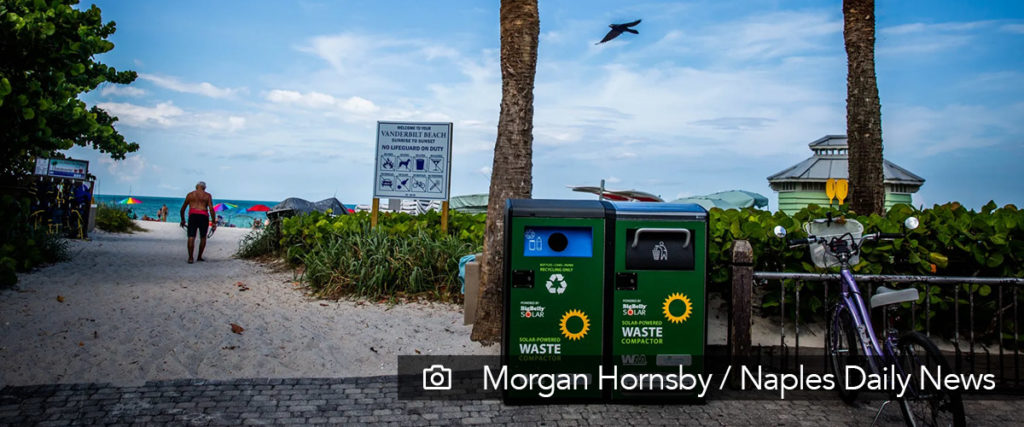By Keep it Local, Florida
“We predict too much for the next year and yet far too little for the next 10.” That thoughtful quote—often attributed to the first man on the moon, Neil Armstrong—brings to mind Pixar’s 2008 film WALL-E, which predicts that by 2105 the Earth will be so saturated with trash that mankind has to evacuate in a giant spaceship. Meanwhile, an army of solar-powered trash compactors called WALL-E’s (short for Waste Allocation Load Lifter Earth-class) are left on Earth to conduct “Operation Cleanup.”
 It’s too early to tell if the Earth will one day be covered in trash, but placing the advent of solar-powered WALL-E’s in the year 2105 is a clear-cut case of predicting too little for the next 10 years. That’s because WALL-E’s are already roaming the Earth. In fact, a few just rolled into Collier County.
It’s too early to tell if the Earth will one day be covered in trash, but placing the advent of solar-powered WALL-E’s in the year 2105 is a clear-cut case of predicting too little for the next 10 years. That’s because WALL-E’s are already roaming the Earth. In fact, a few just rolled into Collier County.
Okay, okay. So, they don’t roll (yet!), but they’re solar-powered just like in the movie and they’ve been placed near Collier County beaches to reduce litter, save costs and offer a greener alternative to traditional waste collection.
“I was taken aback by the idyllic beauty Collier County has to offer,” said Kari Hodgson, director of Solid and Hazardous Waste Management for Collier County. A true love for the area’s beaches led Kari to team with the County’s Parks and Recreation Division, as well as Waste Management Inc. of Florida, to initiate a pilot study of these real-life WALL-E’s—or, WM Solar Powered Trash Compactors.
According to Stephanie Kissinger, Public Sector Solutions Manager at Waste Management Inc. of Florida, the WM Solar Powered Trash Compactor holds five times as much trash as a regular receptable—preventing unsightly litter in public places, while keeping waste in and animals out. It also boasts a 70-80% reduction in waste collection.

“Each compactor contains a solar-powered wireless transmitter,” said Kissinger. “When the solar trash compactor nears capacity, the wireless system sends a signal to the local waste services provider that the unit is ready to be picked up. This system reduces waste collection frequency as well as its associated costs.”
Hodgson said the compactors are located at beach access areas, rather than on the beaches themselves. “They had to be on concrete, not sand,” she said. “But the beach access areas work well since they have high traffic and a high potential for windblown litter.”
Both the County and Waste Management are hopeful about what this technology could mean for maintaining a pristine environment. “We know ordinary trash bins can overflow, particularly at busy intersections, public parks, streets and outdoor events,” said Kissinger. “The litter and debris can travel for miles, polluting our waterways and endangering our wildlife.”
However, Hodgson was quick to point out that these real-life WALL-E’s aren’t permanent residents yet. “Currently, we’re gathering data on sensor reliability, maintenance and cost, as well as user feedback from park employees and the machines themselves,” said Kari. “The results will be evaluated and if determined viable, the pilot has the potential to expand.”
By giving these real-life WALL-E’s a hundred-year head start on “Operation Cleanup,” Collier County is working to help the entire planet avoid the trash-filled future Pixar predicts. It’s yet another example of how innovative local communities can make a world of difference right at home. Tiny telescope icon
